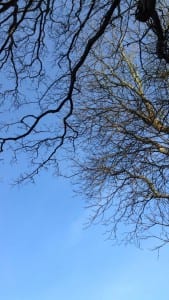After returning to Site with the onset of showing Conan some of the work our group had been preparing, I unfortunately had to take a back seat to listen about the change in ideas that we had been thinking about.
With the ideas of the 1185 earthquake still prominent in our piece I have been researching the basis behind an earthquake, the basic movements and vibrations which must occur for this natural disaster to occur. However I was also intrigued to research a certain artist Janet Cardiff who is known specifically for her work with sound and sound installations.
I have specifically looked at an audio walk formed by Cardiff and Miller named Jena Walk (Memory Field). The basis behind this idea was the audience would listen to an audio piece which would include sound effects from battle scenes as well as excerpts from Louise Seidler’s Diary. Cardiff wanted to use a specific landscape where the Prussians and Napolean battle had taken place 200 years before, this landscape was also a place where Russian tanks did Military exercises and one where Louise Seidler; the painter of Goethe from Jena may have walked. Cardiff took the basis of these historical events to make an audio piece about time and memory, and how one site can hold so many memories yet so many make new memories their every day. Throughout the audio piece one century slips to another and as the listener walks they begin to become aware of each step they are taking, of where they are, of the site they are walking on just as those have for the last 200 years and the stories from those last 200 years begin to mix. The excerpts from Seidler’s diary are cleverly used as …” a narrative that deal with the physicality of memory”. Cardiff, J. Miller, B.G. (2006)
Our own piece is about an earthquake in 1185 which destroyed the Cathedral, our idea for the audio is to almost relive this with the sound of what could be the rumbles that the earthquake would have made (our own interpretation) and the crashes and movements from buildings around them, until the end at the Cathedral with a newspaper headline read out about the fall of the Cathedral. However could we use inspiration from Cardiff’s work, could we use extracts throughout the piece to vocalise what happened rather than allow our listener to decide everything? Would it be better this way to get the audience thinking about if such a tragedy happened now?
Cardiff, J. Miller, B.G. (2006) JENA WALK ( MEMORY FILED). [online] Available from: http://www.cardiffmiller.com/artworks/walks/jena.html [ Accessed 22 March 2015].







